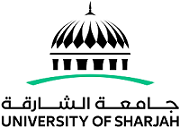Arabic false information detection using deep learning techniques /
Linked Agent
Bou Nassif, Ali,, Thesis advisor
Nasir, Qassim., Thesis advisor
Date Issued
2023
Language
English
Keyword
Thesis Type
Thesis
Abstract
With countless news sources available via online streaming, ostensibly factual news content must be investigated for reliability. In pursuit of this, there is a growing trend toward automating Arabic False News Detection (AFND). Artificial intelligence has become increasingly important in detecting and classifying false and unreliable news published by various sources. We have conducted a comprehensive literature review of DL-based algorithms proposed to engage in False News Detection (FND). The primary aim of my thesis is to develop an effective approach for detecting Arabic false information using a combination of deep learning techniques. This thesis contributes to the literature in two ways: first, we increase the Arabic dataset repository used to address AFND by manually creating our own dataset from scratch. Second, we present a novel approach for detecting Arabic false information using deep learning techniques in natural language processing (NLP). Specifically, we propose an ensemble model that combines convolutional neural networks (CNN) and long short-term memory (LSTM) networks, which allows us to leverage the strengths of both architectures in handling text data. Our approach aims to address the challenge of identifying misleading and deceptive information in Arabic text, which is becoming increasingly prevalent in online platforms. By employing DL in NLP, we demonstrate the effectiveness of our approach in achieving high accuracy and robustness in false information detection. We enhance the model performance using the ensemble method and use the HParams dashboard to apply hyperparameter tuning. Since the issue of FND can be tackled from various feature aspects, we consider the news content-based feature approaches for textual input to evaluate our deep learning FND model. Our proposed AFND model attained a classification accuracy of 97.7% by utilizing a DL ensemble method to address the AFND challenge, leveraging our Arabic corpus that comprises of 18,000 labeled True and False textual news.
Note
A Dissertation Submitted in Partial Fulfilment of the Requirements for Master of Science in Computer Engineering, University of Sharjah, April, 2023.
Category
Theses
Library of Congress Classification
Q342 .S493 2023
Local Identifier
b16375701







